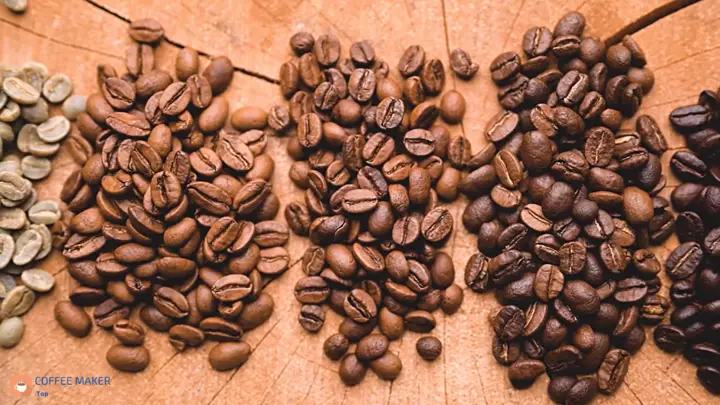In this article, I will answer some of the most frequently asked questions about coffee storage: How should I store coffee to keep it fresh for longer? How long does it stay fresh? Can it be kept in the fridge? Can it be frozen? And so on.
If you use coffee beans that are not fresh, you probably drink oxidised or stale coffee. All you feel is that bitter, roasted taste with hints of ash due to the poor quality of the coffee. To answer the above questions, we must start by understanding what happens chemically to the coffee during roasting.
How coffee changes during roasting
During the roasting process, coffee beans undergo various chemical transformations. It all starts with the breakdown of complex carbohydrates into smaller molecules. As the roasting continues, the beans turn brown, producing water vapour and carbon dioxide.
The “first crackle” sound, similar to popcorn popping, is due to the build-up of these gases, which exert enough pressure to burst the cell walls of the coffee beans.
The off-gassing continues throughout the roasting process. Once roasting is complete, the coffee beans begin to release these gases, especially carbon dioxide, in a process called degassing.

Why can’t freshly roasted coffee beans be used?
Many people think that the presence of carbon dioxide in coffee is negative; however, degassing plays a vital role in the quality of coffee positively.
Considering what happens during the chemical roasting process we saw earlier, it is understandable to ask whether it is necessary to consume coffee as fresh as possible after roasting.
Degassing causes carbon dioxide to form small bubbles that act as a barrier against water. Therefore, coffee cannot be extracted correctly and consistently when the bean is freshly roasted.
The resulting beverage will be very acidic if you consume the coffee immediately after roasting. To bring out all the flavours of the coffee, it is necessary to allow the coffee to degas for a few days. This time will depend on the extraction method you want to use.
From what day after roasting can I use certain coffee beans?
We can start consuming the coffee beans once degassing has been completed. The time to degas the coffee for the best flavour depends on several factors. These include the extraction method, bean processing, bean density and roast level.
Degassing time varies according to the extraction method
- If the coffee is used for espresso, the resting and degassing time should be around two weeks after roasting or even slightly longer.
- On the other hand, if it is used for filtration methods such as the French press, it can start to be used one week after roasting, as extraction times are much longer than espresso.
The degassing time also depends on the processing of the beans
For example, naturally processed beans need a slightly longer degassing than washed beans.
The density of the bean also has an impact on the degassing time
Coffees grown at higher altitudes tend to be denser and have a more compact cell structure, so they retain more gases and need more time to degas.
The level of roast also plays an important role in degassing time
A dark roast accelerates degassing as the beans receive more degradation. Whereas with a light roast, more coffee beans remain intact and require more time for degassing.

Is it advisable to buy freshly roasted coffee?
You may ask yourself if coffee needs time to degas, why bother buying freshly roasted coffee? However, after the necessary degassing time, the beans reach their optimal drinking point, and you can experience how the flavour evolves daily.
In my experience, I have tasted some of the best espressos after four weeks of roasting. However, because the coffee releases carbon dioxide during this time, it can gradually lose its aromas and flavours.
Over time, the coffee oxidises and becomes rancid with unpleasant flavours. Depending on the variables mentioned above, this can occur after the fifth week after roasting, as long as the beans are perfectly packaged and stored.
How to preserve the quality of coffee in terms of aroma and taste?
To maintain the fresh aroma and flavour of coffee, it is necessary to minimise its contact with oxygen. Some ways to do this include:
- Using airtight bags with one-way degassing valves. These bags have an aluminium container inside and a valve that expels the carbon dioxide without allowing air to enter. Removing all air before closing the bag after each use is important.
- Use vacuum-sealed canisters. These jars have a system to expel air and efficiently maintain flavours long-term.
- Freeze coffee if it will not be used for a month or more. Studies have shown that -40º C completely stops the degradation of coffee. Domestic freezers reach approximately -20 degrees Celsius, sufficient to slow down the ageing of coffee. However, it is important to store the coffee beans in a vacuum bag or airtight container, let them thaw in this container before use and let them degas after roasting.
Note: Storing coffee in the refrigerator is not recommended, as humidity and odours from other foods can affect its taste.
Related: What is freeze-dried coffee?